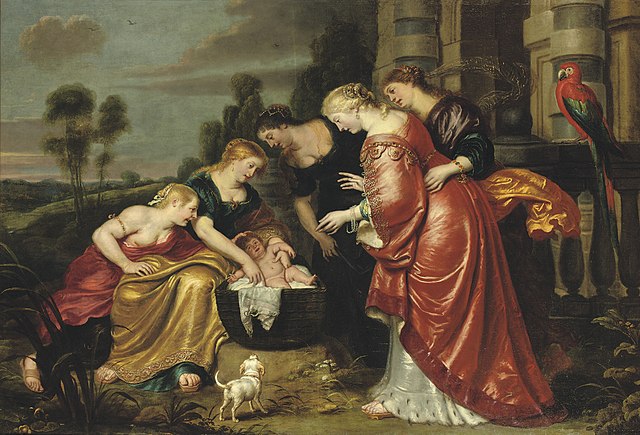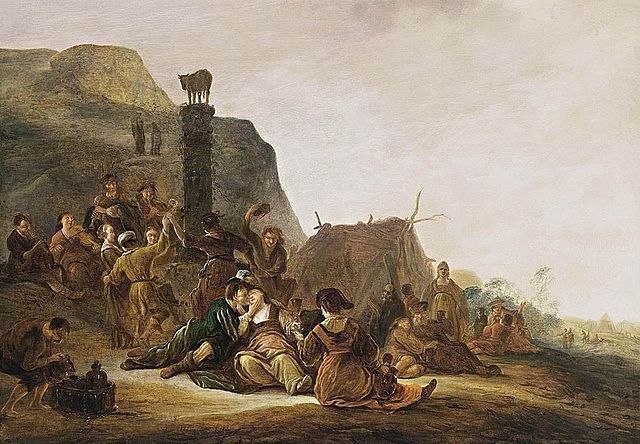The Finding of Moses, sometimes called Moses in the Bulrushes, Moses Saved from the Waters, or other variants, is the story in chapter 2 of the Book of Exodus in the Hebrew Bible of the finding in the River Nile of Moses as a baby by the daughter of Pharaoh. The story became a common subject in art, especially from the Renaissance onwards.
Orazio Gentileschi, Prado, 1633, one of two versions
Cornelis de Vos, c. 1633
Paulus Bor and Cornelis Hendriksz Vroom, 1630s
The Exposition of Moses, as his mother casts him off. The princess's party is further down the bank. Nicolas Poussin
The Book of Exodus is the second book of the Bible. It is a narrative of the Exodus, the origin myth of the Israelites leaving slavery in Biblical Egypt through the strength of their deity named Yahweh, who according to the story chose them as his people. The Israelites then journey with the legendary prophet Moses to Mount Sinai, where Yahweh gives the 10 commandments and they enter into a covenant with Yahweh, who promises to make them a "holy nation, and a kingdom of priests" on condition of their faithfulness. He gives them their laws and instructions to build the Tabernacle, the means by which he will come from heaven and dwell with them and lead them in a holy war to conquer Canaan, which has earlier, according to the myth of Genesis, been promised to the "seed" of Abraham, the legendary patriarch of the Israelites.
Papyrus Oxyrhynchus 1075, a 3rd or 4th century CE manuscript showing part of Exodus 40
Finding of Moses in the Dura-Europos synagogue, c. 244
Geography of the Book of Exodus, with the Nile River and its delta, left, the Red Sea and Sinai desert, center, and the land of Israel, upper right
Worship of the Golden Calf, Gerrit de Wet, 17th century








